missionary
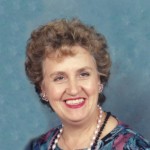
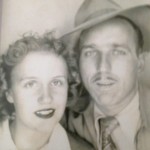 My mom, Collene Spencer was a sweet, loving, and forgiving person all her life. She carried that personality into her marriage and motherhood. I’ve really never met anyone who was as truly kind hearted as my mom was. All of her life she had a heart for people. She tried to tell people about the most important thing in her life…her Lord and Saviour, Jesus Christ. Mom wanted everyone she came across to be in Heaven when they died. Mom was in every way a missionary…just without the funding that many missionaries have. She didn’t travel the world to preach the Gospel, she traveled her world preaching the Gospel. It didn’t matter where she was, if she was with family, friends, or strangers, her mission was clear, and she was a willing servant of the Lord. My guess is that the people she led to the Lord by preaching to them numbers in the thousands. It is her legacy in many ways.
My mom, Collene Spencer was a sweet, loving, and forgiving person all her life. She carried that personality into her marriage and motherhood. I’ve really never met anyone who was as truly kind hearted as my mom was. All of her life she had a heart for people. She tried to tell people about the most important thing in her life…her Lord and Saviour, Jesus Christ. Mom wanted everyone she came across to be in Heaven when they died. Mom was in every way a missionary…just without the funding that many missionaries have. She didn’t travel the world to preach the Gospel, she traveled her world preaching the Gospel. It didn’t matter where she was, if she was with family, friends, or strangers, her mission was clear, and she was a willing servant of the Lord. My guess is that the people she led to the Lord by preaching to them numbers in the thousands. It is her legacy in many ways.
Mom loved all things of beauty. She grew up collecting rocks, and her rock garden was filled with her many finds. She saw beauty in many different things. Our home was decorated with Mom’s own special style, that 
 also included the “artwork” of her girls from time to time. I can’t say that our “artwork” really added to the beauty of her home, but in her eyes they were treasures. I know how much she treasured these things, because when we went through her things after her passing, there were her treasures, including the artwork of her girls. Her girls and her husband, my dad, Allen Spencer, were her world. She wanted nothing more than to take care of us and make a good home for us, and she did that very well, even though she was not able to be a stay-at-home mom for all of our growing up years.
also included the “artwork” of her girls from time to time. I can’t say that our “artwork” really added to the beauty of her home, but in her eyes they were treasures. I know how much she treasured these things, because when we went through her things after her passing, there were her treasures, including the artwork of her girls. Her girls and her husband, my dad, Allen Spencer, were her world. She wanted nothing more than to take care of us and make a good home for us, and she did that very well, even though she was not able to be a stay-at-home mom for all of our growing up years.
Mom always loved to travel. It was something Dad introduced her to, and together, they traveled the United States, visiting almost every state. The vacations we took and the places we got to see were amazing. They showed us every historical marker they could find, and while we might not have appreciated those markers then, we learned so much about our country. I think I can attribute many of my stories to things I learned from my parents. Camping was the order of the day when we traveled, and cooking over a campfire, until later when 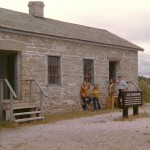
 we got a travel trailer. Mom was an excellent cook and she passed that ability down to her girls. There wasn’t one of her girls who couldn’t cook when we got married, and our husbands have been the beneficiaries of her teaching. She was an amazing teacher of many things, including helping out at our schools, even substitute teaching when I was in grade school. It was another way that she traveled her world, filling it with life, light, and beauty as she went. Today would have been my mom’s 82nd birthday. Happy birthday in Heaven, Mom. We love and miss you very much.
we got a travel trailer. Mom was an excellent cook and she passed that ability down to her girls. There wasn’t one of her girls who couldn’t cook when we got married, and our husbands have been the beneficiaries of her teaching. She was an amazing teacher of many things, including helping out at our schools, even substitute teaching when I was in grade school. It was another way that she traveled her world, filling it with life, light, and beauty as she went. Today would have been my mom’s 82nd birthday. Happy birthday in Heaven, Mom. We love and miss you very much.
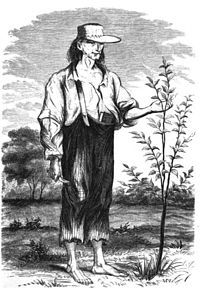 On September 26, 1774, a man named John Chapman, who is my 6th cousin 6 times removed, was born in Leominster, Massachusetts. John was the second child, after his sister Elizabeth, of Nathaniel and Elizabeth Chapman. While Nathaniel was in military service, his wife died on July 18, 1776, shortly after giving birth to a second son, Nathaniel. The baby died about two weeks after his mother. Nathaniel Chapman ended his military service and returned home in 1780 to Longmeadow, Massachusetts. In the summer of 1780 he married Lucy Cooley of Longmeadow, Massachusetts, and they had 10 children. So in the end, John Chapman came from a large family. You might wonder what all this has to do with anything, and I suppose you would be justified in asking, but I think when you hear John Chapman’s nickname, you might know who I am talking about. For most of his life, John Chapman was called, Johnny Appleseed. Most people will remember him from the history books, as an American pioneer nurseryman who introduced apple trees to large parts of Pennsylvania, Ontario, Ohio, Indiana, and Illinois, as well as the northern counties of present-day West Virginia. He became an American legend while he was still alive, due to his kind, generous ways, his leadership in conservation, and the symbolic importance he attributed to apples. These days plant nurseries are often named after Johnny Appleseed, including on in my city of Casper, Wyoming.
On September 26, 1774, a man named John Chapman, who is my 6th cousin 6 times removed, was born in Leominster, Massachusetts. John was the second child, after his sister Elizabeth, of Nathaniel and Elizabeth Chapman. While Nathaniel was in military service, his wife died on July 18, 1776, shortly after giving birth to a second son, Nathaniel. The baby died about two weeks after his mother. Nathaniel Chapman ended his military service and returned home in 1780 to Longmeadow, Massachusetts. In the summer of 1780 he married Lucy Cooley of Longmeadow, Massachusetts, and they had 10 children. So in the end, John Chapman came from a large family. You might wonder what all this has to do with anything, and I suppose you would be justified in asking, but I think when you hear John Chapman’s nickname, you might know who I am talking about. For most of his life, John Chapman was called, Johnny Appleseed. Most people will remember him from the history books, as an American pioneer nurseryman who introduced apple trees to large parts of Pennsylvania, Ontario, Ohio, Indiana, and Illinois, as well as the northern counties of present-day West Virginia. He became an American legend while he was still alive, due to his kind, generous ways, his leadership in conservation, and the symbolic importance he attributed to apples. These days plant nurseries are often named after Johnny Appleseed, including on in my city of Casper, Wyoming.
According to some accounts, an 18 year old John persuaded his 11 year old half-brother Nathaniel to go west with him in 1792. The boys lived a nomadic life until their father brought his large family west in 1805 and met 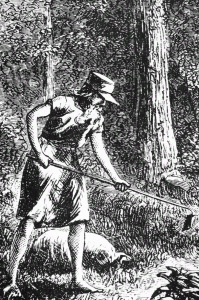 up with them in Ohio. Nathaniel decided to stay and help their father farm the land. A short time later, John began his apprenticeship as an orchardist under a Mr. Crawford, who had apple orchards, and so began his life’s journey of planting apple trees. There are stories of Johnny Appleseed practicing his nurseryman craft in the area of Wilkes-Barre, Pennsylvania, and of picking seeds from the pomace at Potomac cider mills in the late 1790s. Another story has Chapman living in Pittsburgh on Grant’s Hill in 1794 at the time of the Whiskey Rebellion.
up with them in Ohio. Nathaniel decided to stay and help their father farm the land. A short time later, John began his apprenticeship as an orchardist under a Mr. Crawford, who had apple orchards, and so began his life’s journey of planting apple trees. There are stories of Johnny Appleseed practicing his nurseryman craft in the area of Wilkes-Barre, Pennsylvania, and of picking seeds from the pomace at Potomac cider mills in the late 1790s. Another story has Chapman living in Pittsburgh on Grant’s Hill in 1794 at the time of the Whiskey Rebellion.
The most popular image is of Johnny Appleseed spreading apple seeds randomly everywhere he went. In reality, he planted nurseries rather than orchards, and then built fences around them to protect them from livestock. Then he left the nurseries in the care of a neighbor who sold trees on shares, and returned every year or two to tend the nursery. His first nursery was planted on the bank of Brokenstraw Creek, south of Warren, Pennsylvania. Next, he seems to have moved to Venango County along the shore of French Creek, but many of his nurseries were in the Mohican area of north-central Ohio. This area included the towns of Mansfield, Lisbon, Lucas, Perrysville, and Loudonville.
Johnny Appleseed was a bit of a missionary too. He would tell stories to children and spread The New Church gospel to the adults, receiving a floor to sleep on for the night, and sometimes supper, in return. “We can hear him read now, just as he did that summer day, when we were busy quilting upstairs, and he lay near the door, 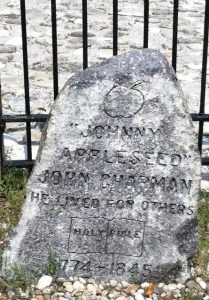 his voice rising denunciatory and thrillin—strong and loud as the roar of wind and waves, then soft and soothing as the balmy airs that quivered the morning-glory leaves about his gray beard. His was a strange eloquence at times, and he was undoubtedly a man of genius,” reported a lady who knew him in his later years. He made several trips back east, both to visit his sister and to replenish his supply of Swedenborgian literature. Swedenborgian was also known as Swedenborgianism and the General Church of the New Jerusalem. Several historically related Christian denominations were developed as a new religious movement, by the writings of Emanuel Swedenborg. Johnny preached the gospel as he traveled, and converted many Native Americans. The Native Americans regarded him as someone who had been touched by the Great Spirit, and even hostile tribes left him strictly alone. Johnny passed away about 1845, with several dates being given. I guess no one really knew the date for sure. I think my cousin might have been a very interesting man.
his voice rising denunciatory and thrillin—strong and loud as the roar of wind and waves, then soft and soothing as the balmy airs that quivered the morning-glory leaves about his gray beard. His was a strange eloquence at times, and he was undoubtedly a man of genius,” reported a lady who knew him in his later years. He made several trips back east, both to visit his sister and to replenish his supply of Swedenborgian literature. Swedenborgian was also known as Swedenborgianism and the General Church of the New Jerusalem. Several historically related Christian denominations were developed as a new religious movement, by the writings of Emanuel Swedenborg. Johnny preached the gospel as he traveled, and converted many Native Americans. The Native Americans regarded him as someone who had been touched by the Great Spirit, and even hostile tribes left him strictly alone. Johnny passed away about 1845, with several dates being given. I guess no one really knew the date for sure. I think my cousin might have been a very interesting man.

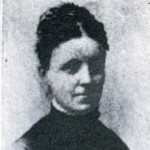 It would be hard for me to imagine walking away from all I knew to travel to India to begin a thirteen year run as the wife of a missionary, especially in 1874, but that is exactly what Mary Barr Uhl did. Mary was a somewhat distant cousin on my husband, Bob’s side of the family…specifically the Knox side of his family. The beginnings of her future mission were actually laid by when she was still a child. An elderly relative, Dr John Scudder laid his hand on her head and stated his wish for her to become a missionary. I’m sure that for a little girl, being a missionary meant very little, but as she grew, perhaps the words stayed with her. Sometimes, when we think about something like that for so many years, events in our lives line up to put us in exactly the right position to fulfill just such a mission, without our really thinking about it very much at all. Such was the case for little Mary Barr.
It would be hard for me to imagine walking away from all I knew to travel to India to begin a thirteen year run as the wife of a missionary, especially in 1874, but that is exactly what Mary Barr Uhl did. Mary was a somewhat distant cousin on my husband, Bob’s side of the family…specifically the Knox side of his family. The beginnings of her future mission were actually laid by when she was still a child. An elderly relative, Dr John Scudder laid his hand on her head and stated his wish for her to become a missionary. I’m sure that for a little girl, being a missionary meant very little, but as she grew, perhaps the words stayed with her. Sometimes, when we think about something like that for so many years, events in our lives line up to put us in exactly the right position to fulfill just such a mission, without our really thinking about it very much at all. Such was the case for little Mary Barr.
Mary Barr was born in Savannah, Ohio, and was educated there and in Springfield, Ohio. As was the case with most girls in those days, becoming a teacher was the degree of choice, and so Mary Barr became a teacher. As time went by, it’s possible that the desire of the elderly Dr John Scudder to have Mary become a missionary, faded into the past to a degree, until she met Lemon Leander Uhl. Leander as he was called, was a pastor in the Lutheran church. Dr Uhl was a graduate of Wittenberg College and Seminary in Springfield, Ohio, and did his post graduate work at John Hopkins University in Baltimore, Maryland. The couple married in the fall of 1872, and Dr Uhl became a missionary in the India field of the General Synod, Lutheran Church. Thus, the desire of Mary’s relative, Dr John Scudder, became a reality. Leander and Mary would spend the next thirteen years in the mission field in India. Mary and Leander arrived in Guntur, India in March of 1873. Mary opened the first school for girls of the upper classes and the first Zenana work for the same classes. She carried on both forms of mission work for many years. Mary’s perseverance and dedication won her great respect in that country. She was an untiring worker among the Telugu Hindus, and aided her husband in the Anglo Vernacular School by visiting the young men students in their homes.
Mary and Leander’s only child, Grace was born in Guntur, India during those missionary years. That is another thing I can’t quite imagine…having my baby so far away from my mother, and the doctors that I trusted in the United States, but by then, perhaps Mary felt comfortable with the help she had around her. It didn’t matter really, because she had no choice. You can’t stop babies from coming when it’s time. You just have to go through it. For Mary, childbirth went well, and she had a beautiful little daughter. It was by the grace of God, and so they named her Grace. While I’m sure that giving birth in a foreign country might have been an event filled with apprehension, the life they gave their daughter was one of many experiences. Not only did Grace experience life in another country, but she experienced schooling in many places. Grace would graduate from the College of Liberal Arts of Boston University in Boston, Massachusetts.
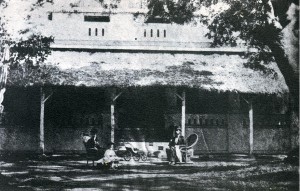
Mary Barr Uhl’s life took many turns that might have seemed far fetched to a child, who had been told of the desire of an elderly relative, but in the end, the desire of Dr John Scudder, that little Mary Barr would become a missionary had come to pass. Her life was not ruled by this man, it was just his desire…that became her desire too. Perhaps he saw something in that little girl that told him that she would be a great missionary. I suppose we will never know, but Mary did indeed, become a great missionary, and spent many years serving God in that capacity before retiring and returning to the United States. She died on March 26, 1926 at the age of 80 years, having fulfilled her destiny.
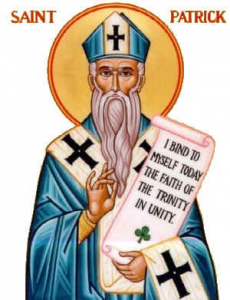 Many holidays get their start on the birth or death of someone famous or very special, and Saint Patrick’s Day is no exception. It was the day that Saint Patrick died in Saul, Ireland. I’m sure that wasn’t surprising to anyone. So, the question then becomes, who was Saint Patrick, and why is he being honored?
Many holidays get their start on the birth or death of someone famous or very special, and Saint Patrick’s Day is no exception. It was the day that Saint Patrick died in Saul, Ireland. I’m sure that wasn’t surprising to anyone. So, the question then becomes, who was Saint Patrick, and why is he being honored?
Saint Patrick was a Christian missionary, bishop, and apostle of Ireland, but that in and of itself was not what made him famous. He lived in a time in history when little would be known of a person’s life if no one took the time to write things down. The Internet, Facebook, and Twitter were far off in the very distant future, so people wrote letters and kept journals. Saint Patrick wrote a book that he titled, “Confessio”, during his last year of life, and it is from these writings that we know what we know of him.
Saint Patrick was born in Great Britain probably in Scotland, to a wealthy Christian family of Roman citizenship. At the age of about 16 years, he was captured be Irish marauders and made to be a slave. For the next six years he worked as a herder in Ireland. Due to the long lonely days, far from family and other human companionship, he drew closer and closer to God for comfort. After hearing a voice in a 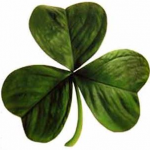 dream one night, he escaped and found passage on a ship that took him back to Great Britain and his family. Once he was back with his family, he had another dream. In the dream someone named Victoricus gave him a letter entitled “The Voice of the Irish.” He felt like the Irishmen were pleading with him to go back to Ireland.
dream one night, he escaped and found passage on a ship that took him back to Great Britain and his family. Once he was back with his family, he had another dream. In the dream someone named Victoricus gave him a letter entitled “The Voice of the Irish.” He felt like the Irishmen were pleading with him to go back to Ireland.
In 433, he returned to Ireland, after studying to become an ordained Christian minister and started preaching the Gospel. Thousands of Irishmen were converted to Christianity and many churches were built all around Ireland. After 40 years of devoting his life to God and His work, Saint Patrick died on March 17, 461, in the town of Saul, Ireland, which is where he built his first church.
Since his passing, many legends have grown up about him. He was made the patron saint of Ireland, and 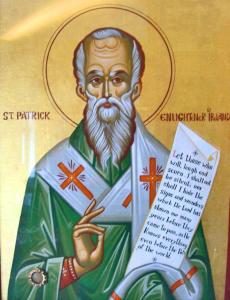 people say that he baptised hundreds of people in a single day. He is also said to have used a three-leaf clover, which became the famous shamrock to describe the Holy Trinity. He is portrayed as trampling snakes because it is said that he had driven them out of Ireland. The Irish observe the day of his passing as a national holiday, attending church in the mornig and celebrating with food and drink in the afternoon. Later the rest of the world jumped on board, and the first Saint Patrick’s Day parade was celebrated in the United States, and involved Irish soldiers serving in the English military marching through the streets of New York City in 1762. The parades became a show of unity and strength for the Irish-American immigrants and the party went global in 1995 when the Irish government started a campaign to matket Saint Patrick’s Day as a way of driving tourists to Ireland. Today, March 17th is still celebrated by millions of people, many of whom probably have no idea what this man stood for. It’s something to think about for sure. Happy Saint Patrick’s Day!!
people say that he baptised hundreds of people in a single day. He is also said to have used a three-leaf clover, which became the famous shamrock to describe the Holy Trinity. He is portrayed as trampling snakes because it is said that he had driven them out of Ireland. The Irish observe the day of his passing as a national holiday, attending church in the mornig and celebrating with food and drink in the afternoon. Later the rest of the world jumped on board, and the first Saint Patrick’s Day parade was celebrated in the United States, and involved Irish soldiers serving in the English military marching through the streets of New York City in 1762. The parades became a show of unity and strength for the Irish-American immigrants and the party went global in 1995 when the Irish government started a campaign to matket Saint Patrick’s Day as a way of driving tourists to Ireland. Today, March 17th is still celebrated by millions of people, many of whom probably have no idea what this man stood for. It’s something to think about for sure. Happy Saint Patrick’s Day!!

